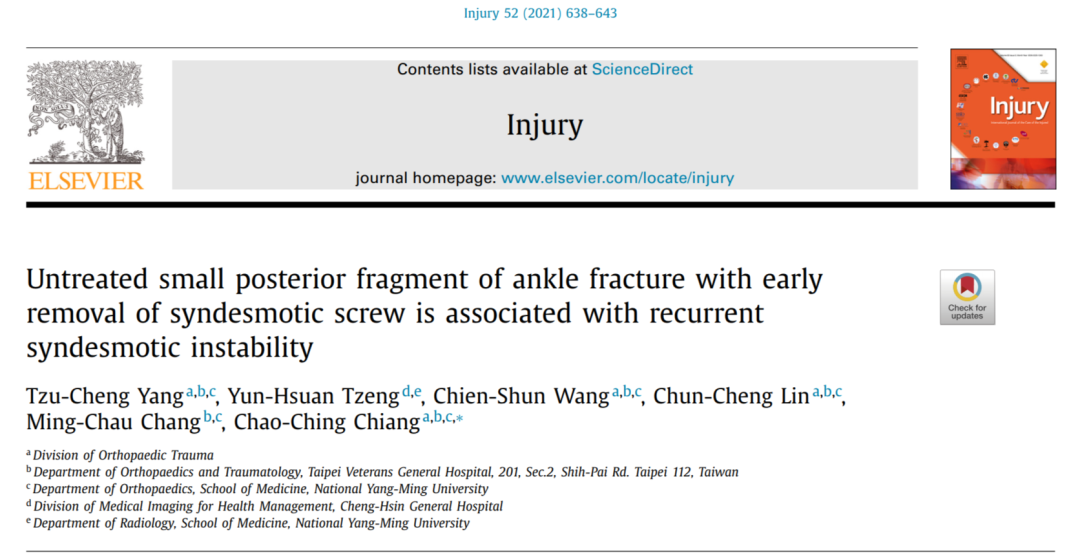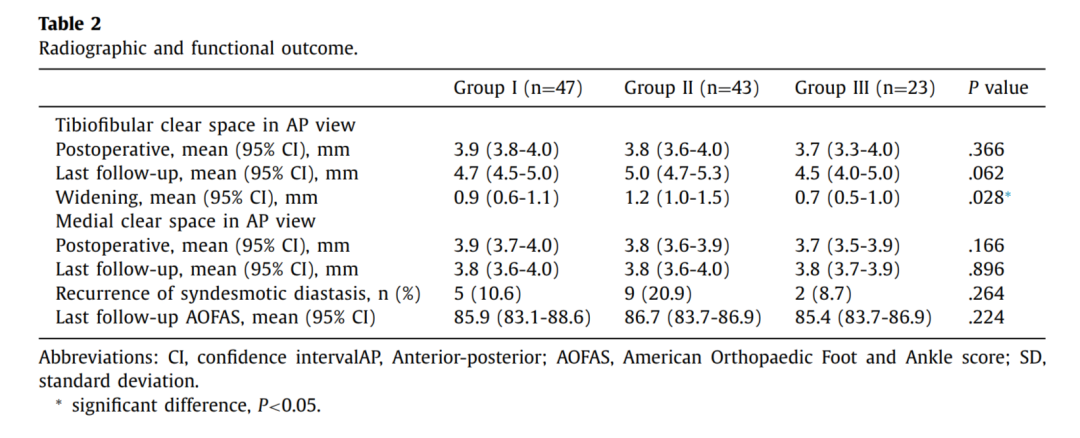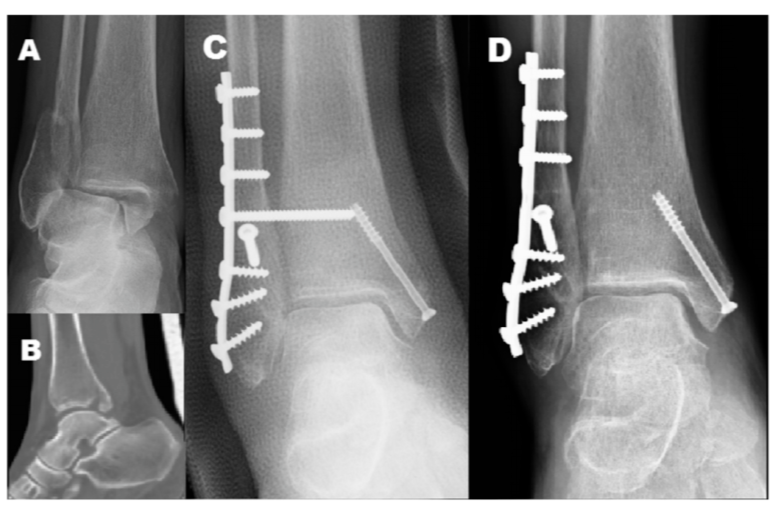后踝骨折及下胫腓联合螺钉取出时机与下胫腓不稳的关系
2021-11-18 Dr. Zhang 骨科青年
为研究双踝/三踝骨折下胫腓螺钉取出的最佳时机,及未固定的后踝与下胫腓稳定性的关系,有学者进行了相关研究,结果发表在近期Injury期刊上。


Introduction(介绍)
Methods(方法)
[Methods: We retrospectively reviewed patients who received open reduction and internal fixation for bi-malleolar (without PMF) or tri-malleolar ankle fracture (with PMF) with syndesmotic injury between January 2013 and December 2017 with at least 24 months of postoperative follow-up. All patients suffered syndesmotic instabilities and were treated using a syndesmotic screw without PMF fixation. Patients with bi-malleolar fracture with syndesmotic screw removal at 6 to 8 weeks postoperatively were included in Group I, tri-malleolar fracture with syndesmotic screw removal at 6 to 8 weeks in Group II, and trimalleolar fracture with syndesmotic screw removal at 3 months in Group III. Demographic data, clinical and radiographic outcomes were analyzed.]
Results(结果)
[Results: A total of 113 patients were included (Group I, n=47; Group II, n=43; Group III, n=23). Average size of PMF was 14% in patients with tri-malleolar fractures (Groups II and III). No significant difference in ankle functional outcome among groups was observed. The recurrence rate of syndesmotic instability was 10.6% in Group I, 20.9% in Group II, and 8.7% in Group III. Although the difference in recurrence rates of syndesmotic instability among three groups was not statistically significant (P=0.264), Group II showed more interval change in tibiofibular clear space between initial postoperative radiographs and last follow-up radiographs (P=0.028) compared to the other two groups. Fracture union was achieved in
all patients without screw breakage.]


表2:三组患者影像和功能结果


Conclusion(结论)
[Conclusion: We suggest that the better timing for syndesmotic screw removal is 3 months, instead of 6 to 8 weeks postoperatively, to reduce the risk of recurrence of syndesmotic instability for tri-malleolar fracture without posterior fragment fixation.]

本网站所有内容来源注明为“梅斯医学”或“MedSci原创”的文字、图片和音视频资料,版权均属于梅斯医学所有。非经授权,任何媒体、网站或个人不得转载,授权转载时须注明来源为“梅斯医学”。其它来源的文章系转载文章,或“梅斯号”自媒体发布的文章,仅系出于传递更多信息之目的,本站仅负责审核内容合规,其内容不代表本站立场,本站不负责内容的准确性和版权。如果存在侵权、或不希望被转载的媒体或个人可与我们联系,我们将立即进行删除处理。
在此留言







